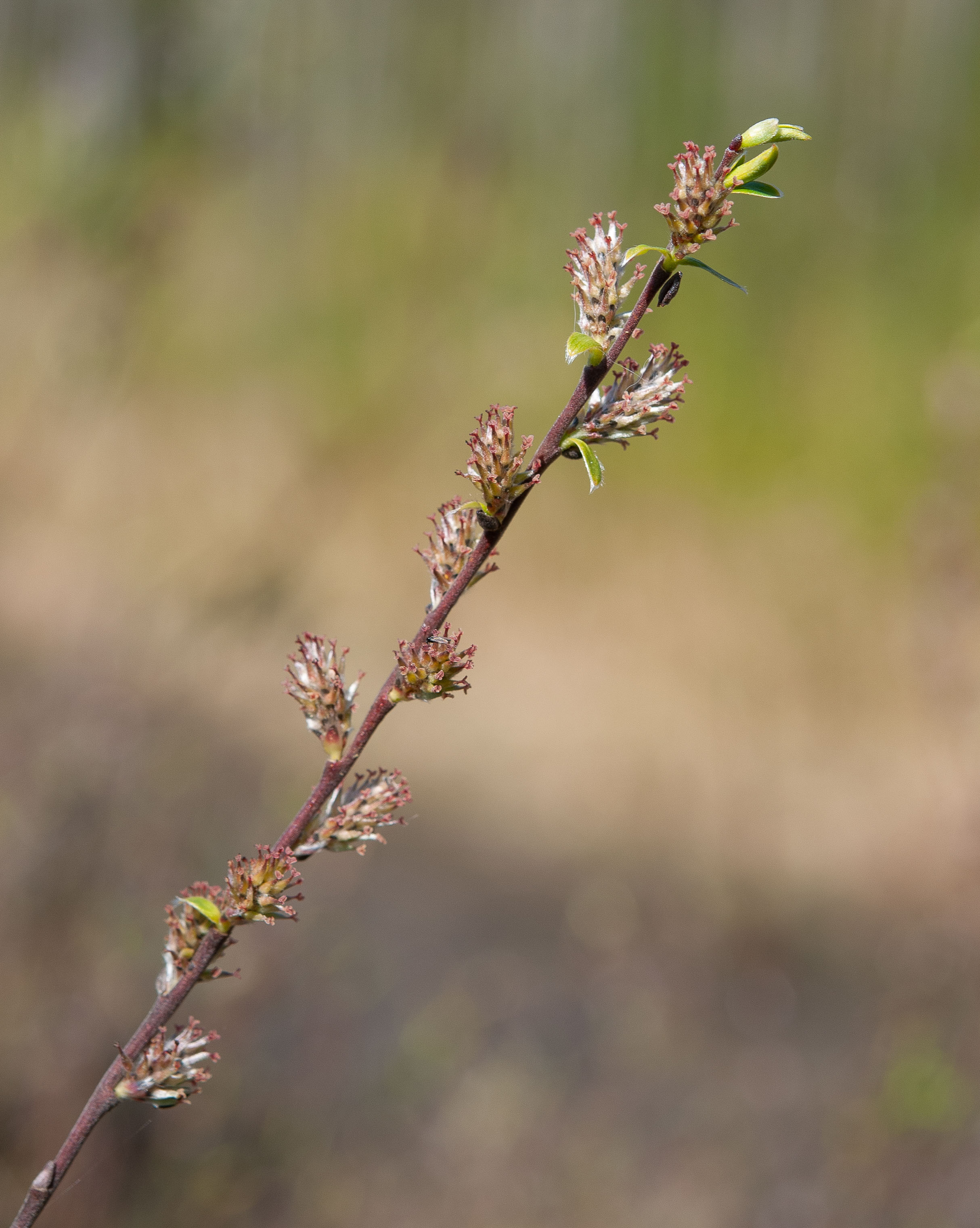Willows of Northern Europe
A guide to the identification and ecology of a northern keystone plant group

Salix repens L. is a morphologically very polymorphic species that consists of at least three forms or subspecies that are not fully separated from each other. Hovever, all forms of the S. repens complex are characterized by low stature, from less than 0.5 meters (S. repens repens, and S. r. arenaria) to up to 1.5 meters in height (S. repens rosmarinifolia), and by having generally small and elongated leaves with undersides covered by long silvery hairs. S. repens grows in many environments with relatively nutrient-poor soils, such as coastal sand dunes, periodically inundated depressions in dry pine forests, and forested bogs. S. repens is distributed from Western Europe to Central Siberia, with a wide admixture zone between the western S. r. repens and eastern S. r. rosmarinifolia occurring approximately around the Ural mountains. In northern Europe, S. repens is found in southern Sweden and Norway, along the Finnish and Swedish coastlines of the Bothnian Bay, and at scattered inland locations in northern Finland and the northwestern parts of Russia.
Leaves, shoots, inflorescences, catkins, and ecology
Leaves of S. repens are small (less than 3–4 centimeters in length) and more or less elongated with pointy tips. The leaf edge is entire and typically recurved. Depending on the subspecies, the upper surface of the leaves may be pubescent of glabrous, but all cases the lower surface is covered by thick pubsecence consisting of long, silvery hairs. Stipules are usually absent.
Depending on the subspecies, the growth form of individual plants can be creeping or erect, but shoots are in all cases thin. Yellowish or reddish-brown current-year shoots may be glabrous or at least initially pubescent.
Flowering starts before or contemporaneously with leafburst, and inflorescences and catkins are supported by short stalks with 2–7 small leaves. Bracts are dark, and the amount of pubescence on ovaries and later capsules varies among and within the subspecies. Male and female inflorescences as well as catkins are comparatively short, with few flowers or capsules, and can be almost round.
The marked ecological variability found within the S. repens complex means that a wide variety of different associated herbivore species have been recorded from Central Europe, including diverse leaf-feeding, leaf-mining, gall-inducing, and catkin-feeding taxa in Lepidoptera, Coleoptera, and Hymenoptera. The pollinator community of S. repens has been poorly characterized, but especially the communities of S. repens forms associated with coastal sand dunes are expected to differ from those of willows growing in less extreme habitats.
